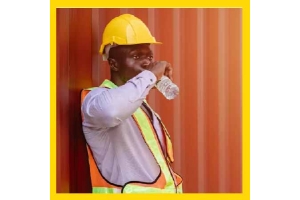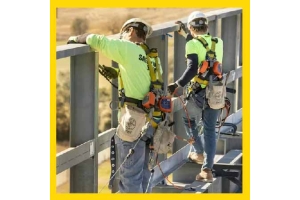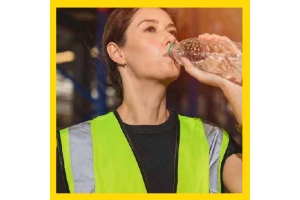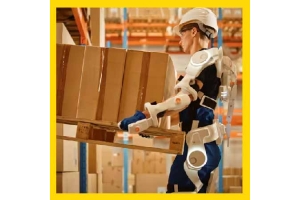Currency
October 04, 2022

A step-by-step path to eliminate or reduce hazards
Are you familiar with the Hierarchy of Controls? Featuring an inverted pyramid, it’s a framework and a visual guide for controlling workplace hazards and protecting employees.
The hierarchy starts with the controls perceived to be most effective. Then, it moves down to those considered least effective. As defined by NIOSH, the hierarchy flows as follows:
Elimination – Physically remove the hazard
Substitution – Replace the hazard with a safer alternative
Engineering controls – Isolate people from the hazard
Administrative controls – Change the way people work
Personal protective equipment – Protect the worker with PPE
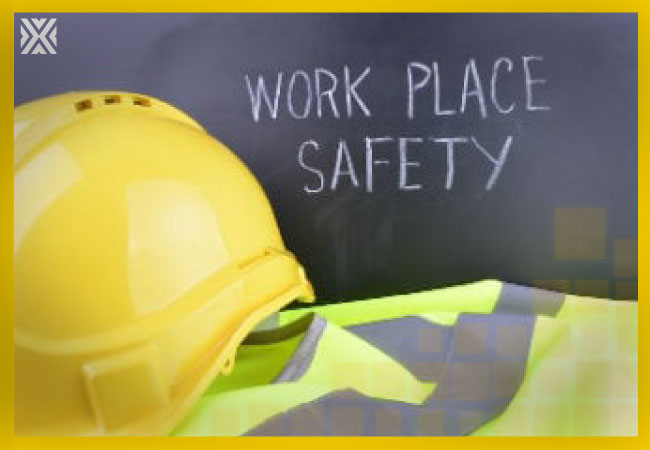
“Following this hierarchy normally leads to the implementation of inherently safer systems, where the risk of illness or injury has been substantially reduced,” NIOSH says.
Let’s take a look.
“Elimination removes the hazard at the source,” NIOSH says. “This could include changing the work process to stop using a toxic chemical, heavy object or sharp tool. It is the preferred solution to protect workers because no exposure can occur.”
The agency acknowledges that although elimination and substitution are the most effective at reducing hazards, they’re often the most difficult measures to implement for an existing process.
“If the process is still at the design or development stage, elimination and substitution of hazards may be inexpensive and simple to implement. For an existing process, major changes in equipment and procedures may be required.”
Once you move below elimination on the hierarchy, some risk likely will be involved, cautions Thomas “T.J.” Lentz, lead health scientist and chief of the NIOSH Science Applications Branch.
“You could possibly get to zero risk with substitution, but only with elimination are you accomplishing that by removing the hazard completely.”
Substitution can come in many forms. Jonathan Bach, director of NIOSH’s Prevention through Design initiative, pointed to two that stem from the chemical industry: minimization and simplification.
Examples of minimization are using smaller quantities of a hazardous material, a lower voltage of energy, and reduced temperatures or pressures.
Simplification is the process of reducing unnecessary complexity; confusion caused by instructions, labels or signs; or the number of steps to complete a task.
“Simplification, in my mind, can also be considered a type of substitution,” Bach said. “You’re substituting something simpler instead of something complex. You’re improving the reliability that way.”
Types of engineering controls to separate workers from a hazard include ventilation – especially relevant during the COVID-19 pandemic – guardrails and machine guards.
NIOSH’s Engineering Control database is a central repository of agency information on engineering control technology that allows users to search by specific industry, exposure scenario or activity.
Bach and Lentz said additional resources for engineering controls include CPWR – The Center for Construction Re-search and Training, OSHA, and reports from the NIOSH Fatality Assessment and Control Evaluation Program (as well as OSHA’s and NIOSH’s state-level counterparts).
The National Safety Council’s Work To Zero initiative is aimed at helping employers identify technological solutions for workplace hazards.
Examples of administrative controls include rotating workers to limit their exposures to a hazardous substance, scheduling work at cooler times of the day during the summer and restricting access to a dangerous area in a workplace.
“Administrative controls and PPE are frequently used with existing processes where hazards are not particularly well controlled,” NIOSH says, adding that these two kinds of controls are relatively inexpensive initially but “can be very costly to sustain.”
That’s because they can require extensive oversight or continuous training and supervision, Lentz said.
When it comes to PPE, the long-stated piece of advice in the safety world is: Don’t just turn to it without first exploring other control options.
“You shouldn’t take necessarily the easiest route or use that as a permanent solution when there are other options that are probably more reliable, more effective in the long run,” Lentz said.
“That said, I think it often gets short shrift because we do recognize that there are cases where it is not the only option, but it’s one of the important options, for ensuring people remain safe.” Months after turning 40 in 1967, Bach’s father, Oliver, died of kidney failure caused by exposure to industrial chemicals. Although those hazards could’ve been designed out, Bach said, PPE would have helped as well.
“PPE is crucial and will always be needed. It would have worked for my father, as would any of the controls further up the hierarchy.”
When progressing through the Hierarchy of Controls, take time and proximity into account, Bach said. Time includes working early in the work process – or, better yet, in the planning process – to control hazards, rather than later.
Regarding proximity: Be aware that toward the top of the hierarchy, the objective is to control the source of the hazard. Toward the bottom, the goal is to protect the worker and/or others from potential harm.
Additionally, controls are either passive or active. At the top of the hierarchy, a worker won’t need to play a role to help control the hazard, but will need to become more of an active participant farther down the hierarchy. “Even with engineering controls, some of them require more actions by the workers and the management than others, whether it’s filter changes, maintenance inspections or just flipping switches,” Bach said.
The more actions needed, the more the “must trust” factor comes into play, he cautioned. For example, employers will have to trust workers to wear PPE correctly every time, while workers will have to trust that their employer will provide the proper PPE. The farther you go up on the hierarchy, reliance on or trust in sometime fallible people is less of a factor.
Are you familiar with the Hierarchy of Controls? Featuring an inverted pyramid, it’s a framework and a visual guide for controlling workplace hazards and protecting employees.
The hierarchy starts with the controls perceived to be most effective. Then, it moves down to those considered least effective. As defined by NIOSH, the hierarchy flows as follows:
Elimination – Physically remove the hazard
Substitution – Replace the hazard with a safer alternative
Engineering controls – Isolate people from the hazard
Administrative controls – Change the way people work
Personal protective equipment – Protect the worker with PPE

“Following this hierarchy normally leads to the implementation of inherently safer systems, where the risk of illness or injury has been substantially reduced,” NIOSH says.
Let’s take a look.
Elimination
Physically remove the hazard“Elimination removes the hazard at the source,” NIOSH says. “This could include changing the work process to stop using a toxic chemical, heavy object or sharp tool. It is the preferred solution to protect workers because no exposure can occur.”
The agency acknowledges that although elimination and substitution are the most effective at reducing hazards, they’re often the most difficult measures to implement for an existing process.
“If the process is still at the design or development stage, elimination and substitution of hazards may be inexpensive and simple to implement. For an existing process, major changes in equipment and procedures may be required.”
Once you move below elimination on the hierarchy, some risk likely will be involved, cautions Thomas “T.J.” Lentz, lead health scientist and chief of the NIOSH Science Applications Branch.
“You could possibly get to zero risk with substitution, but only with elimination are you accomplishing that by removing the hazard completely.”
Substitution
Replace the hazard with a safer alternativeSubstitution can come in many forms. Jonathan Bach, director of NIOSH’s Prevention through Design initiative, pointed to two that stem from the chemical industry: minimization and simplification.
Examples of minimization are using smaller quantities of a hazardous material, a lower voltage of energy, and reduced temperatures or pressures.
Simplification is the process of reducing unnecessary complexity; confusion caused by instructions, labels or signs; or the number of steps to complete a task.
“Simplification, in my mind, can also be considered a type of substitution,” Bach said. “You’re substituting something simpler instead of something complex. You’re improving the reliability that way.”
Engineering controls
Isolate people from the hazardTypes of engineering controls to separate workers from a hazard include ventilation – especially relevant during the COVID-19 pandemic – guardrails and machine guards.
NIOSH’s Engineering Control database is a central repository of agency information on engineering control technology that allows users to search by specific industry, exposure scenario or activity.
Bach and Lentz said additional resources for engineering controls include CPWR – The Center for Construction Re-search and Training, OSHA, and reports from the NIOSH Fatality Assessment and Control Evaluation Program (as well as OSHA’s and NIOSH’s state-level counterparts).
The National Safety Council’s Work To Zero initiative is aimed at helping employers identify technological solutions for workplace hazards.
Administrative controls
Change the way people workExamples of administrative controls include rotating workers to limit their exposures to a hazardous substance, scheduling work at cooler times of the day during the summer and restricting access to a dangerous area in a workplace.
“Administrative controls and PPE are frequently used with existing processes where hazards are not particularly well controlled,” NIOSH says, adding that these two kinds of controls are relatively inexpensive initially but “can be very costly to sustain.”
That’s because they can require extensive oversight or continuous training and supervision, Lentz said.
PPE
Protect the worker with personal protective equipmentWhen it comes to PPE, the long-stated piece of advice in the safety world is: Don’t just turn to it without first exploring other control options.
“You shouldn’t take necessarily the easiest route or use that as a permanent solution when there are other options that are probably more reliable, more effective in the long run,” Lentz said.
“That said, I think it often gets short shrift because we do recognize that there are cases where it is not the only option, but it’s one of the important options, for ensuring people remain safe.” Months after turning 40 in 1967, Bach’s father, Oliver, died of kidney failure caused by exposure to industrial chemicals. Although those hazards could’ve been designed out, Bach said, PPE would have helped as well.
“PPE is crucial and will always be needed. It would have worked for my father, as would any of the controls further up the hierarchy.”
Key concepts
When progressing through the Hierarchy of Controls, take time and proximity into account, Bach said. Time includes working early in the work process – or, better yet, in the planning process – to control hazards, rather than later.
Regarding proximity: Be aware that toward the top of the hierarchy, the objective is to control the source of the hazard. Toward the bottom, the goal is to protect the worker and/or others from potential harm.
Additionally, controls are either passive or active. At the top of the hierarchy, a worker won’t need to play a role to help control the hazard, but will need to become more of an active participant farther down the hierarchy. “Even with engineering controls, some of them require more actions by the workers and the management than others, whether it’s filter changes, maintenance inspections or just flipping switches,” Bach said.
The more actions needed, the more the “must trust” factor comes into play, he cautioned. For example, employers will have to trust workers to wear PPE correctly every time, while workers will have to trust that their employer will provide the proper PPE. The farther you go up on the hierarchy, reliance on or trust in sometime fallible people is less of a factor.
